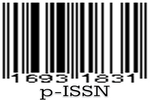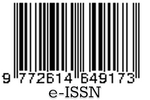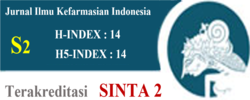Cost-effectiveness analysis of the use of antibiotics for typhoid fever inpatients in RSUD Bayu Asih Purwakarta
Abstract
Typhoid fever is an infectious disease caused by Salmonella typhi, commonly treated with antibiotics to promote recovery and prevent complications. This study aimed to evaluate both the therapeutic effectiveness (clinical outcomes such as fever resolution and hospital stay duration) and the cost-effectiveness (economic efficiency of antibiotic use) in inpatients with typhoid fever at RSUD Bayu Asih Purwakarta (Bayu Asih District Hospital, Purwakarta) in 2023. A retrospective descriptive design was applied using 75 medical records from January to December 2023. Results showed that levofloxacin had the highest therapeutic effectiveness, reflected by the shortest hospitalization (3.5 days), whereas ceftriaxone was the most cost-effective, with an Average Cost-Effectiveness Ratio (ACER) of Rp. 194,858.78 per treatment. The Incremental Cost-Effectiveness Ratio (ICER) analysis indicated that the additional cost required for levofloxacin compared to ceftriaxone was disproportionate to the clinical benefit gained. In conclusion, while levofloxacin provides faster recovery, ceftriaxone remains the preferred option considering its superior cost-effectiveness. These findings emphasize the need to balance clinical outcomes and economic efficiency when determining antibiotic policies for typhoid management.
References
[2] W. H. O. WHO, “Typhoid,” https://www.who.int/news-room/fact-sheets/detail/typhoid.
[3] K. K. R. I. Kementerian kesehatan Republik Indonesia, “Profil kesehatan Indonesia 2023,” Jakarta, Jun. 2023. Accessed: Oct. 08, 2025. [Online]. Available: https://kemkes.go.id/id/profil-kesehatan-indonesia-2023
[4] C. Kim, G. R. Goucher, B. T. Tadesse, W. Lee, K. Abbas, and J. H. Kim, “Associations of water, sanitation, and hygiene with typhoid fever in case–control studies: a systematic review and meta-analysis,” BMC Infect Dis, vol.
23, no. 1, pp. 1–17, Dec. 2023, doi: 10.1186/S12879-023-08452-0/FIGURES/6.
[5] S. E. G. de Alba, L. R. Nucamendi, V. B. E. Sandoval, N. V. V. Martínez, P. L. Z. Naranjo, and C. J. G. Godínez, “Update on Treatment of Enteric Fever in Pediatric Patients According to Current Multidrug Resistance,” International Journal of Medical Science and Clinical Research Studies, vol. 03, no. 10, Oct. 2023, doi:
10.47191/IJMSCRS/V3-I10-20.
[6] A. Katiyar, P. Sharma, S. Dahiya, H. Singh, A. Kapil, and P. Kaur, “Genomic profiling of antimicrobial resistance genes in clinical isolates of Salmonella typhi from patients infected with Typhoid fever in India,” Sci Rep, vol. 10, no. 1, Dec. 2020, doi: 10.1038/S41598-020-64934-0.
[7] A. Aslam, S. Ahmed Kharal, M. Aslam, and A. Raza, “Trends of antimicrobial resistance in typhoidal strains of salmonella in a tertiary care Hospital in Pakistan,” Cureus, vol. 13, Jan. 2021, doi: 10.7759/CUREUS.12664.
[8] A. M. Tanmoy et al., “Trends in antimicrobial resistance amongst Salmonella typhi in Bangladesh: A 24-year retrospective observational study (1999–2022),” PLoS Negl Trop Dis, vol. 18, no. 10, Oct. 2024, doi: 10.1371/JOURNAL.PNTD.0012558.
[9] S. Khadka, B. Shrestha, A. Pokhrel, S. Khadka, R. D. Joshi, and M. R. Banjara, “Antimicrobial resistance in Salmonella typhi ısolated from a referral hospital of Kathmandu, Nepal,” Microbiol Insights, vol. 14, Jan. 2021, doi: 10.1177/11786361211056350.
[10] Y. Yusransyah, Y. Rahmawati, B. Udin, and N. M. Kurnia, “Cost-effectiveness analysis of ceftriaxone and cefixime in typhoid fever patients hospitalized at berkah Pandeglang regional hospital for the Period 2020-2021,” Jurnal Farmasi Sains dan Praktis, pp. 178–184, Aug. 2023, doi: 10.31603/PHARMACY.V9I2.8648.
[11] M. W. Pratama, G. Winarni, and L. A. Utari, “Cost-effectiveness analysis of third-generation cephalosporin antibiotics in the treatment of typhoid fever at Tangerang Selatan General Hospital,” Indonesian Journal of Pharmaceutical Education, vol. 5, no. 1, Feb. 2025, doi: 10.37311/IJPE.V5I1.30254.
[12] R. J. G. Arnold, Pharmacoeconomics : From Theory to Practice, 1st Edition. CRC Press, 2016. doi: 10.1201/9781420084405.
[13] H. Y. Nguyen-Thi et al., “Evaluation of the impact before and after the application of an antimicrobial stewardship program at Dong Thap General Hospital, Vietnam, from 2017 to 2021,” Infection Prevention in Practice, vol. 5, no. 4, Dec. 2023, doi: 10.1016/J.INFPIP.2023.100311.
[14] M. G. D. Harun, S. A. Sumon, I. Hasan, F. M. Akther, M. S. Islam, and M. M. U. Anwar, “Barriers, facilitators, perceptions and impact of interventions in implementing antimicrobial stewardship programs in hospitals of low-middle and middle countries: a scoping review,” Antimicrob Resist Infect Control, vol. 13, no. 1, Dec. 2024, doi:
10.1186/S13756-024-01369-6.
[15] L. Lim, L. Kassym, A. Kussainova, B. Aubakirova, and Y. Semenova, “Optimizing antibiotic stewardship and reducing antimicrobial resistance in Central Asia: A study protocol for evidence-based practice and policy,” PLoS One, vol. 20, no. 1 January, Jan. 2025, doi: 10.1371/JOURNAL.PONE.0307784.
[16] A. Restyana, W. Admaja, and N. R. Fitria, “Cost-Effectiveness analysis of ceftriaxon and chloramphenicol ın pediatric patients with tyfoid fever ın Hospital X, Jombang Regency,” Journal for Quality in Public Health, vol. 6, no. 2, pp. 365–373, May 2023, doi: 10.30994/JQPH.V6I2.446.
[17] R. I. Ruru, G. Citraningtyas, and J. P. Uneputty, “Analisis efektivitas biaya (cost effectiveness analysis) pengobatan ınfeksi saluran kemih menggunakan antibiotik seftriakson dan siprofloksasin di RSUP. Prof. Dr. R. D. Kandou,” PHARMACON, vol. 7, no. 3, Jul. 2018, doi: 10.35799/PHA.7.2018.20238.
[18] R. Yuniarti, D. Paryanti, and A. Tejaningsih, “Analysis of financial performance and services performance before and during the Covid-19 Pandemic (Case Study at Bayu Asih Hospital Purwakarta),” Turkish Journal of Physiotherapy and Rehabilitation, vol. 32, no. 2021, 2021.
[19] D. Husereau et al., “Consolidated health economic evaluation reporting standards 2022 (CHEERS 2022) statement: updated reporting guidance for health economic evaluations,” BMJ, vol. 376, Jan. 2022, doi: 10.1136/BMJ-2021-067975.
[20] E. von Elm, D. G. Altman, M. Egger, S. J. Pocock, P. C. Gøtzsche, and J. P. Vandenbroucke, “The strengthening the reporting of observational studies in epidemiology (STROBE) statement: guidelines for reporting observational studies.,” Lancet, vol. 370, no. 9596, pp. 1453–1457, Oct. 2007, doi: 10.1016/S0140-6736(07)61602-
X.
[21] R. J. G. Arnold, Pharmacoeconomics: From Theory to Practice, 1st Edition. Boca Raton: CRC Press, 2009. doi: 10.1201/9781420084405.
[22] W. Limpitikul and P. Singchungchai, “Cost effectiveness in treatment of typhoid Costs and Effectiveness of Ciprofloxacin and Ceftriaxone in Treatment of Typhoid Fever in Children in Thailand,” Public Health Research, vol. 3, no. 1, pp. 192–197, 2013.
[23] A. Giri, A. Karkey, S. Dongol, and B. Basnyat, “Azithromycin and cefixime combination versus azithromycin alone for the out-patient treatment of clinically suspected or confirmed uncomplicated typhoid fever in South Asia: a randomised controlled trial protocol,” Wellcome Open Res, vol. 6, no. 207, 2021, Accessed: Sep. 29, 2024.
[Online]. Available: https://wellcomeopenresearch.org/articles/6-207/v2
[24] R. S. Kuddah and S. W. M. Husnah, “Clinical profile in adult typhoid fever in patients at hospital X, East Jakarta, Indonesia, January–March 2018,” Medical Technology and Environmental Health, pp. 160–171, Aug. 2020, doi: 10.1201/9781003016700-28.
[25] Y. Yunita and A. Soyata, “Problems of drug therapy in patients with tyfoid fever at the ınstallation of At-Taqwa Islam Hospital Gumawang Belitang Period January-December 2021,” Jurnal Farmasi Klinik dan Sains, vol. 2, no. 2, p. 14, Dec. 2022, doi: 10.26753/JFKS.V2I2.1003.
[26] M. L. Alvarez, F. Wurgaft, and J. Espinoza, “Fecal-Oral cycle and hygiene habits in families of school children who had typhoid fever,” Pediatric Research 1988 23:6, vol. 23, no. 6, pp. 649–649, Jun. 1988, doi: 10.1203/00006450-198806000-00036.
[27] F. Oktaviana et al., “Efektivitas terapi antibiotika demam tifoid pada pediatrik di Rumah Sakit X Kota Kediri,” Journal Syifa Sciences and Clinical Research (JSSCR), vol. 3, no. 2, pp. 63–70, Aug. 2021, doi: 10.37311/JSSCR.V3I2.11688.
[28] F. Khanam et al., “Typhoid fever in young children in Bangladesh: clinical findings, antibiotic susceptibility pattern and Immune Responses,” PLoS Negl Trop Dis, vol. 9, no. 4, p. e0003619, Apr. 2015, doi: 10.1371/JOURNAL.PNTD.0003619.
[29] S. Dahiya et al., “Current antibiotic use in the treatment of enteric fever in children,” Indian J Med Res, vol. 149, no. 2, pp. 263–269, Feb. 2019, doi: 10.4103/IJMR.IJMR_199_18.
[30] D. Thaver, A. K. M. Zaidi, J. Critchley, A. Azmatullah, S. A. Madni, and Z. A. Bhutta, “A comparison of fluoroquinolones versus other antibiotics for treating enteric fever: meta-analysis,” BMJ, vol. 338, no. 7707, p. 1371, Jun. 2009, doi: 10.1136/BMJ.B1865.
[31] N. M. D. P. Dewi, “Analisis cost effectiveness penggunaan antibiotik kloramfenikol, seftriakson dan sefiksim sebagai terapi demam tifoid anak (studi dilakukan di ınstalasi rawat ınap Rumah Sakit Karsa Husada Kota Batu),” Universitas Brawijaya, Malang, 2019.
[32] H. Kurniawati and Marianti, “Quantitative antibiotic use profile in typhoid,” Sriwijaya Journal of Medicine, vol. 3, no. 3, pp. 113–118, Oct. 2020, doi: 10.32539/SJM.V3I3.87.
[33] S. K. Kasiakou, G. J. Sermaides, A. Michalopoulos, E. S. Soteriades, and M. E. Falagas, “Continuous versus intermittent intravenous administration of antibiotics: a meta-analysis of randomised controlled trials,” Lancet Infectious Diseases, vol. 5, no. 9, pp. 581–589, Sep. 2005, doi: 10.1016/S1473-3099(05)70218-8/ASSET/05FDAA37-AD3E-4DF1-8CB2-06F1DF5646DE/MAIN.ASSETS/GR4.SML.
[34] K. Wal Hazimah, M. Priastomo, R. Rusli, L. Penelitian dan Pengembangan Kefarmasian, and F. Tropis, “Analisis efektivitas biaya penggunaan antibiotik pada pasien demam tifoid di RS SMC Periode 2017,” Jurnal Sains dan Kesehatan, vol. 2, no. 2, pp. 107–114, Dec. 2019, doi: 10.25026/JSK.V2I2.126.
[35] D. Thaver, A. Zaidi, J. Critchley, S. Madni, and Z. Bhutta, “Fluoroquinolones for treating typhoid and paratyphoid fever (enteric fever),” Cochrane Database of Systematic Reviews, no. 2, Apr. 2005, doi: 10.1002/14651858.CD004530.PUB2/INFORMATION/EN.
[36] M. Zakir, M. Khan, M. I. Umar, G. Murtaza, M. Ashraf, and S. Shamim, “Emerging trends of multidrug-resistant (MDR) and extensively drug-resistant (XDR) Salmonella typhi in a tertiary care hospital of lahore, pakistan,” Microorganisms, vol. 9, no. 12, p. 2484, Dec. 2021, doi: 10.3390/MICROORGANISMS9122484/S1.
[37] M. P. Bestari and H. Karuniawati, “Evaluasi rasionalitas dan efektifitas penggunaan antibiotik pada pasien pneumonia pediatrik di ınstalasi rawat ınap Rumah Sakit Pusat Jawa Tengah,” Pharmacon: Jurnal Farmasi Indonesia, vol. 14, no. 2, pp. 62–71, Mar. 2019, doi: 10.23917/PHARMACON.V14I2.6524.
[38] M. A. Jackson et al., “The use of systemic and topical fluoroquinolones,” Pediatrics, vol. 138, no. 5, Nov. 2016, doi: 10.1542/PEDS.2016-2706/60708.
[39] G. J. Sullivan, N. N. Delgado, R. Maharjan, and A. K. Cain, “How antibiotics work together: molecular mechanisms behind combination therapy,” Curr Opin Microbiol, vol. 57, pp. 31–40, Oct. 2020, doi: 10.1016/J.MIB.2020.05.012.
[40] P. W. M. van Dorst et al., “Cost-Effectiveness of test-and-treat strategies to reduce the antibiotic prescription rate for acute febrile ıllness in primary healthcare clinics in Africa,” Appl Health Econ Health Policy, vol. 22, no. 5, pp. 701–715, Sep. 2024, doi: 10.1007/S40258-024-00889-X/FIGURES/6.
[41] M. W. Pratama, G. Winarni, and L. A. Utari, “Cost-Effectiveness analysis of third-generation cephalosporin antibiotics in the treatment of typhoid fever at Tangerang Selatan general hospital,” Indonesian Journal of Pharmaceutical Education, vol. 5, no. 1, Feb. 2025, doi: 10.37311/IJPE.V5I1.30254.
[42] C. Casman et al., “Characteristics of body temperature in children with dengue hemorrhagic fever and typhoid fever,” Journal of Nursing Innovation, vol. 2, no. 1, pp. 7–13, Mar. 2023, doi: 10.61923/JNI.V2I1.9.
[43] I. I. Geneva, B. Cuzzo, T. Fazili, and W. Javaid, “Normal body temperature: A Systematic Review,” Open Forum Infect Dis, vol. 6, no. 4, Apr. 2019, doi: 10.1093/OFID/OFZ032.
[44] R. F. Fithria, K. Damayanti, and R. P. Fauziah, “perbedaan efektivitas antibiotik pada terapi demam tifoid di puskesmas bancak kabupaten Semarang tahun 2014,” in Prosiding Seminar Nasional Peluang Herbal Sebagai Alternatif Medicine Tahun 2015, Fakultas Farmasi Universitas Wahid Hasyiim, Nov. 2017, pp. 1–6. doi:
10.31942/JIFFK.V0I0.1337.
[45] D. A. Saputra, “Terapi pada demam tifoid tanpa komplikasi,” Jurnal Penelitian Perawat Profesional, vol. 3, no. 1, pp. 213–222, Feb. 2021, doi: 10.37287/JPPP.V3I1.392.
[46] F. Laumba, G. Citraningtyas, and A. Yudistira, “analisis efektivitas biaya (cost effectiveness analysis) pada pasien gastritis kronik rawat ınap di RSU. Pancaran Kasih GMIM Manado,” PHARMACON, vol. 6, no. 3, Jul. 2017, doi: 10.35799/PHA.6.2017.16946.
[47] A. Z. Zhang, D. Negoescu, and C. Munoz-Zanzi, “When and what to test for: a cost-effectiveness analysis of febrile illness test-and-treat strategies in the era of responsible antibiotic use,” PLoS One, vol. 15, no. 1, p. e0227409, Jan. 2020, doi: 10.1371/JOURNAL.PONE.0227409.

This work is licensed under a Creative Commons Attribution-NonCommercial-ShareAlike 4.0 International License.
Licencing
All articles in Jurnal Ilmu Kefarmasian Indonesia are an open-access article, distributed under the terms of the Creative Commons Attribution-NonCommercial-ShareAlike 4.0 International License which permits unrestricted non-commercial used, distribution and reproduction in any medium.
This licence applies to Author(s) and Public Reader means that the users mays :
- SHARE:
copy and redistribute the article in any medium or format - ADAPT:
remix, transform, and build upon the article (eg.: to produce a new research work and, possibly, a new publication) - ALIKE:
If you remix, transform, or build upon the article, you must distribute your contributions under the same license as the original. - NO ADDITIONAL RESTRICTIONS:
You may not apply legal terms or technological measures that legally restrict others from doing anything the license permits.
It does however mean that when you use it you must:
- ATTRIBUTION: You must give appropriate credit to both the Author(s) and the journal, provide a link to the license, and indicate if changes were made. You may do so in any reasonable manner, but not in any way that suggests the licensor endorses you or your use.
You may not:
- NONCOMMERCIAL: You may not use the article for commercial purposes.
This work is licensed under a Creative Commons Attribution-NonCommercial-ShareAlike 4.0 International License.




 Tools
Tools





















